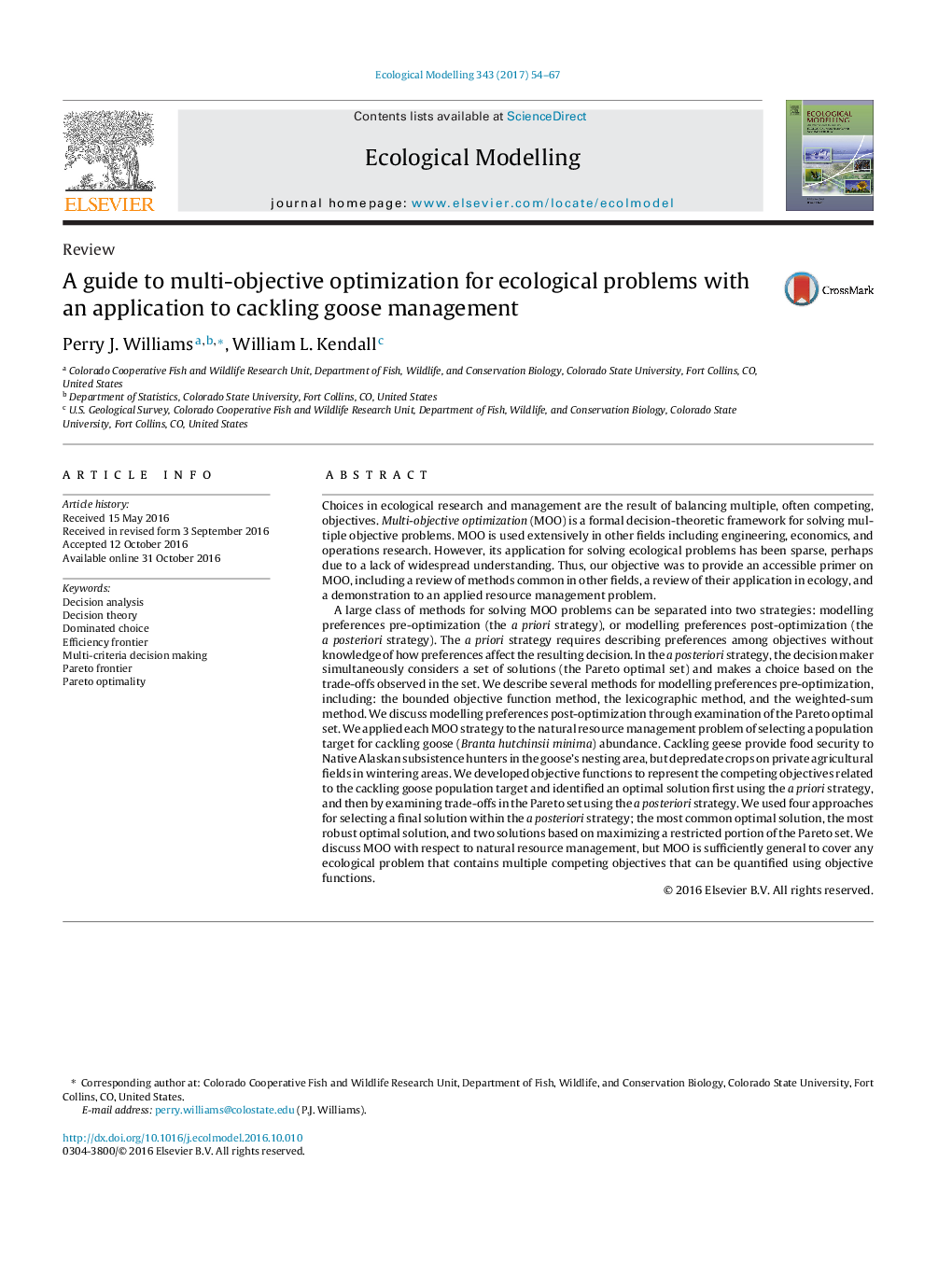| کد مقاله | کد نشریه | سال انتشار | مقاله انگلیسی | نسخه تمام متن |
|---|---|---|---|---|
| 5742302 | 1617404 | 2017 | 14 صفحه PDF | دانلود رایگان |
- We provide a guide to multi-objective optimization (MOO) for ecological problems with multiple objectives.
- We review common methods used in MOO in other fields.
- We review applications of MOO to ecological problems.
- We provide an example of MOO for selecting a population target for a harvested species.
Choices in ecological research and management are the result of balancing multiple, often competing, objectives. Multi-objective optimization (MOO) is a formal decision-theoretic framework for solving multiple objective problems. MOO is used extensively in other fields including engineering, economics, and operations research. However, its application for solving ecological problems has been sparse, perhaps due to a lack of widespread understanding. Thus, our objective was to provide an accessible primer on MOO, including a review of methods common in other fields, a review of their application in ecology, and a demonstration to an applied resource management problem.A large class of methods for solving MOO problems can be separated into two strategies: modelling preferences pre-optimization (the a priori strategy), or modelling preferences post-optimization (the a posteriori strategy). The a priori strategy requires describing preferences among objectives without knowledge of how preferences affect the resulting decision. In the a posteriori strategy, the decision maker simultaneously considers a set of solutions (the Pareto optimal set) and makes a choice based on the trade-offs observed in the set. We describe several methods for modelling preferences pre-optimization, including: the bounded objective function method, the lexicographic method, and the weighted-sum method. We discuss modelling preferences post-optimization through examination of the Pareto optimal set. We applied each MOO strategy to the natural resource management problem of selecting a population target for cackling goose (Branta hutchinsii minima) abundance. Cackling geese provide food security to Native Alaskan subsistence hunters in the goose's nesting area, but depredate crops on private agricultural fields in wintering areas. We developed objective functions to represent the competing objectives related to the cackling goose population target and identified an optimal solution first using the a priori strategy, and then by examining trade-offs in the Pareto set using the a posteriori strategy. We used four approaches for selecting a final solution within the a posteriori strategy; the most common optimal solution, the most robust optimal solution, and two solutions based on maximizing a restricted portion of the Pareto set. We discuss MOO with respect to natural resource management, but MOO is sufficiently general to cover any ecological problem that contains multiple competing objectives that can be quantified using objective functions.
Journal: Ecological Modelling - Volume 343, 10 January 2017, Pages 54-67
